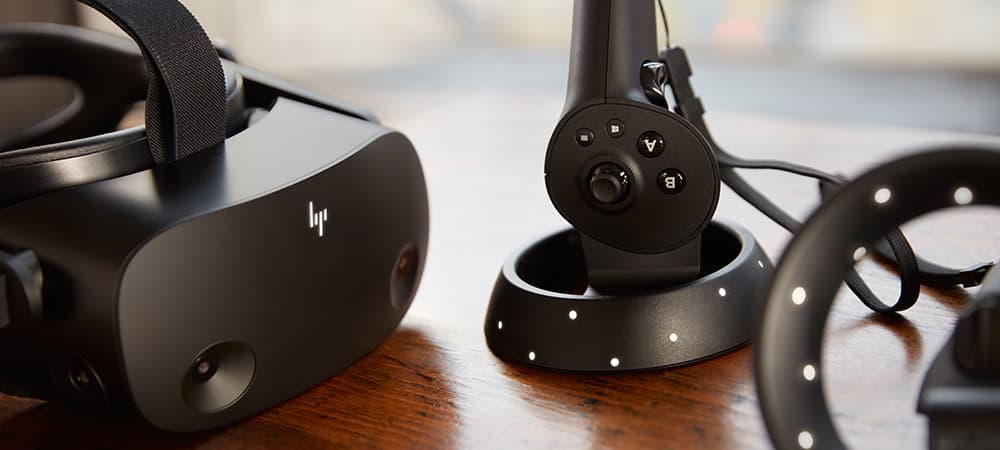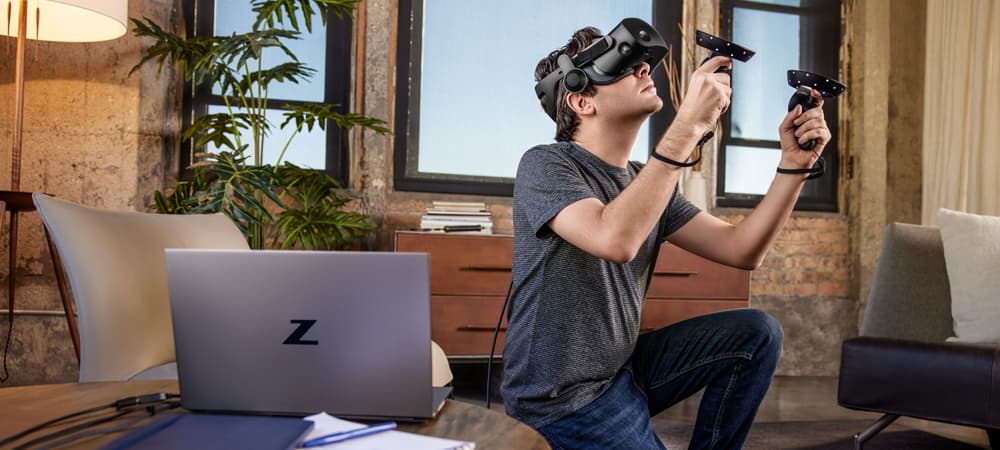You might think of virtual reality (VR) only as it relates to the world of gaming but this unique technology offers promise far outside of saving princesses. VR has huge potential in many other industries. Here are six unexpected ways VR is weaving itself into the fabric of our modern lives.
What is virtual reality?
First, it’s important to understand a little bit about virtual reality before we dive into how it’s changing our modern landscape. VR is an immersive technology that builds out a simulated environment and effectively tricks your brain into believing you’re somewhere you’re not.
It typically features both hardware and software to increase the user’s suspension of disbelief.
The four elements of virtual reality
- 3D-simulated environment: An artificial environment is rendered through a medium like a VR display or a headset. The user’s visual perspective changes based on movements occurring in the real world.
- Immersion: The environment is realistic enough where you can effectively recreate a realistic, non-physical universe so that a strong suspension-of-disbelief is created.
- Sensory engagement: VR can include visual, audio, and haptic cues that help make the immersion more complete and realistic. This is where accessories or input devices such as special gloves, headsets, or hand controls provide the VR system with additional input of movement and sensory data.
- Realistic interactivity: The virtual simulation responds to the user’s actions and these responses occur in a logical, realistic manner.
How is virtual reality is revolutionizing different industries?
Virtual reality is proving its mettle in a variety of different industries, from healthcare to on-the-job training.
1. Diagnostics
Virtual reality can help facilitate a better physician-patient relationship in both in-person visits and telehealth interactions that happen over an internet connection. During in-person visits, doctors can more thoroughly explain a diagnosis by examining X-rays and other medical imaging in an engaging manner directly with the patient using virtual reality technology. By leveraging VR tech, physicians can explain a medical issue in an interactive, easier-to-understand manner.
Virtual imaging may also provide more accurate and better patient medical records since they deliver a more holistic picture of medical needs and history to both patients and physicians. VR technology also provides physicians with the potential to see the impact of certain procedures in real-time for better healthcare decisions.
2. High-risk job training
Firefighters, cops, soldiers - these are all workers who regularly face dangerous circumstances and may benefit from
VR training to practice routine emergency procedures and learn the dos and don’ts in a consequence-free virtual environment. For example, a firefighter can learn emergency protocols without being in an actual burning building to test his or her knowledge.
Virtual reality provides job trainees with ways to learn in a hands-on way outside of textbook case studies.
Research suggests that some people may learn best by doing rather than relying on abstract theory, so virtual reality may speed up the learning process for some trainees as an additional benefit.
3. Cinema and entertainment
And it makes sense why movie-goers and other entertainment-seekers are excited about the future of this technology, VR movies provide an expansive, sensory-filled experience that creates an immersive, more intense event.
Gaming is another area where VR is defying expectations. Virtual reality technology allows gamers to become the avatar instead of just controlling it and pushes the boundaries of the gaming medium itself.
VR gaming revenue is
expected to reach $19.5 billion by 2025 so gamers will continue to see advances and new VR-enabled gaming experiences.
4. Virtual tourism
New VR software enables users to visit museums and historical sites virtually so, instead of saving up thousands to visit Greece or Morocco, you can do the next best thing: take a virtual tour. It also provides educators with a unique way to explore the world with their students.
If you are actually traveling, virtual reality also offers the opportunity for users to tour hotels during the booking process.
5. Surgeon and medical student training
As mentioned earlier, VR and healthcare are going to be closely intertwined in the future. But another way VR assists health practitioners specifically relates to rare or complex surgeries.
Virtual reality software means that surgeons can hone their surgical skills in a virtual simulation before performing it on an actual patient. Likewise, medical students may benefit from virtual hands-on training that presents no risk or real-life consequences.
6. Shopping
You might already be familiar with the concept of virtual window shopping where you simply browse your favorite sites and favorite promising items to revisit later. Well, VR tech is being rolled out which provides even more instant gratification.
VR shopping software allows shoppers to window shop in a much more visceral way than just making virtual wish lists.
With consumer VR, customers can virtually try on clothes, remodel their homes, and “window shop” using VR for a seamless shopping experience.
Does HP offer VR-ready technology?
HP offers the
HP HTC Vive with dual OLED displays with 2880 x 1600 resolution so the user can take in a natural field-of-view in their simulated environment. Adjustable and removable headphones with integrated noise-canceling audio deliver natural, crystal-clear sound. It’s the perfect VR device for professional training, designing, and healthcare applications.
In addition, HP offers a
wide array of VR-ready laptops for on-the-go, mobile solutions so users won’t be confined to one particular area. Take your VR-ready products wherever your day takes you.
Takeaways: VR is here to stay
As VR technology grows more sophisticated and widespread, it will likely start influencing even more industries. The VR market revenue is expected to
swell to over $9 billion by 2025, and HP is leading the way.
You might think of virtual reality (VR) only as it relates to the world of gaming. And while it’s true this unique technology is delivering an incredibly immersive experience that pushes the boundaries of the gaming medium itself, VR has huge potential in many other industries. Let’s take a deep dive into the unexpected ways VR is weaving itself into the fabric of our modern lives.
- VR gaming revenue for 2014 was $1.26 billion total but is expected to reach $19.5 billion by 2025 [1]
What is virtual reality?
- This immersive technology builds out a simulated environment and effectively tricks your brain into believing you’re somewhere you’re not
- It typically features both hardware and software to increase the user’s suspension of disbelief
- The VR market revenue is expected to swell to over $9 billion by 2025 [2]
The four elements of virtual reality [3]
- 3D-simulated environment
- An artificial environment typically rendered through a medium like a display or a headset
- Visual perspective changes based on movements occurring in the real world
- Immersion
- The environment is realistic enough where you can effectively recreate a realistic, non-physical universe
- A strong suspension-of-disbelief is created
- Sensory engagement
- VR can include visual, audio, and haptic cues that help make the immersion more complete and realistic
- This is where accessories or input devices such as special gloves, headsets, or hand controls provide the VR system with additional input of movement and sensory data
- Realistic interactivity
- The virtual simulation responds to the user’s actions
- The responses occur in a logical, realistic manner
Virtual reality is revolutionizing multiple industries
1. Diagnostics
a. The AR/VR in Healthcare Market is estimated to reach $7 Billion by 2026 [4]
b. Virtual reality can help facilitate a better physician-patient relationship. With virtual reality, doctors can more thoroughly explain a diagnosis by examining X-rays and other medical imaging in an engaging manner directly with the patient
c. Virtual imagining may also provide more accurate and better patient medical records since they deliver a more holistic picture of medical needs and history to both patients and physicians
d. VR technology also provides physicians with the potential to see the impact of certain procedures in real-time for better healthcare decisions [5]
2. High-Risk Job Training
a. Studies have suggested that some people may learn best by doing rather than relying on abstract theory [6]
b. Firefighters, cops, soldiers - these are all workers who may benefit from VR training to practice routine emergency procedures to learn the dos and don’ts in a consequence-free virtual environment [7]
3. Cinema and Entertainment
a. 66% of consumers are interested in VR for TV, movies, and video [8]
b. VR movies provide an expansive, sensory-filled experience to make entertainment more immersive
4. Virtual Tourism
a. VR enables users to visit museums and historical sites virtually
b. Tour hotels during the booking process
5. Surgeon and Medical Student Training
a. Surgeons need to hone their skills before engaging in complicated surgical procedures. VR provides a modern way for surgeons to practice complex surgeries before a real operation on a patient
b. Likewise, medical students may benefit from virtual hands-on training that presents no risk or real-life consequences
6. Shopping
a. 66% of consumers are interested in VR shopping experiences [9]
b. You can virtually try on clothes, remodel your home, and “window shop” using VR for a seamless shopping experience
VR-ready technology by HP
HP is poised to reinvent your reality with our suite of VR-ready technology.
HP Reverb Virtual Reality Headset
- 114-degree field
- Adjustable and removable headphones with integrated spatial audio
- Dual mics with smart assistant
- Bluetooth capabilities for seamless syncing and controller tracking
- Perfect for professional training, designing, and healthcare
HP HTC Vive Pro Full Kit VR System
- Integrated noise-canceling feature
- Optimized design for maximum user comfort
- Dual-OLED displays with 2880x1600 resolution
- 3D spatial sound
- Ideal for gamers, teachers, and entertainment-seekers
Related content you might enjoy:
[5] The Body VR; Diagnostic and Planning


















